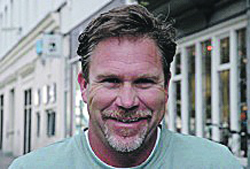
| ||||||
What is resiliency?
Resiliency was once thought to be a trait, but more recent research indicates it is a set of processes. This is good news. The larger category of residence is made up of resiliency skills that can be learned and taught. Early studies by Anna Freud on children who were subjected to bombings in London indicated that family characteristics like consistent limit setting and families that modeled dealing with difficult emotions helped kids to "bounce back." Many of our kids deal with the more secret anxieties of school pressure and social pressure. When I was growing up there weren't any shows where people got voted off the show. Exclusion has become entertainment.
By the way, the bulk of the present research indicates that the primary factor in aiding kids in bouncing back is to have caring and supportive relationships inside and outside the family.
What can we do about it?
The American Psychological Association came up with a list of 10 processes that aid in building resiliency and here are my translations of four that I think are perfect for families to work on.
1) Make connections: Relationships are important to kids. Build intergenerational time in your family life. Families that have activities that bring grandparents and cousins and extended family members together build a stronger sense of support and connection. If your family is far away use Skype or immerse yourself in a local faith-based community.
2) Have realistic plans and follow through: This might involve you modeling how you solve problems at work or in your family life. Barry Schwartz in his book, The Paradox of Choice, makes a strong case that too much choice causes us anxiety. It is not realistic for a 7 year old to pick out what they want for dinner from a multi-page menu. Order a few things for the table and eat family style. Let your kids see your mistakes and how you deal with them. This modeling is important to teaching them that don't have to be perfect.
3) Avoid letting things get blown out of proportion: We can teach our kids to take a step back and see things from a longer term perspective. Having the ability to calm your self and take things in stride can take some time to learn and it is best to have multiple teachers and models.
4) Have a positive view of yourself: This is not about children's self-esteem, it is about helping kids to look realistically at their skills and acknowledge their strengths. In Ken Robinson's book The Element: How Finding Your Passion Changes Everything, he makes a strong case that we are healthier when we can realize the point where our talents and our interests meet. A place he calls the element.
I tried to use this one to avoid weekend chores and take long naps where I do dream work. You can try it, but it didn't work.
You can find the rest of the list at APA.com.
Reach the reporter at:
Copyright
